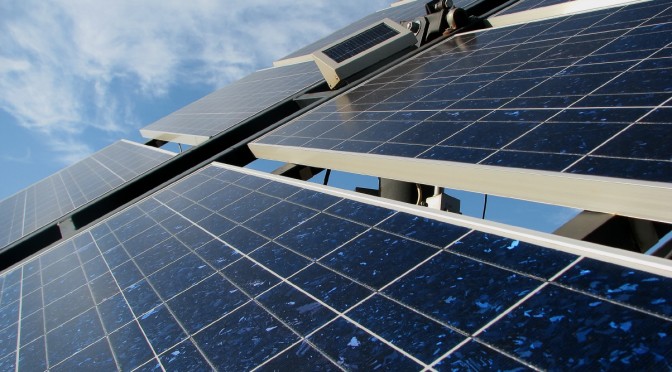The United States Marines are already using solar panels to reduce their reliance on fuel generators, but by 2025, the few and proud hope eliminate the diesel-chugging monstrosities entirely.
The Office of Naval Research has announced new partnerships with Raytheon, Battelle and Emcore to develop a transportable hybrid system that would leverage solar energy, heat and biofuel to power a Marine outpost for up to 15 days. Not only would these systems run much quieter, but they’d also reduce the need for fuel supply convoys, which are prime targets for attack in battle settings.
The Office of Naval Research (ONR) is looking to the sun for energy in an effort to help Marines do away with diesel-guzzling generators now used in combat outposts, officials announced Nov. 29.
The Renewable Sustainable Expeditionary Power (RSEP) program seeks to create a transportable renewable hybrid system that can provide Marines with electricity for a 15-day mission without relying on fuel resupply convoys that often become targets for adversaries.
“This program takes on a number of power-related challenges and ultimately will allow the Marine Corps to take a big step toward its goal of using fuel only for mobility purposes by 2025,” said H. Scott Coombe, product manager for RSEP, a collaboration between ONR’s Expeditionary Maneuver Warfare and Combating Terrorism and Sea Warfare and Weapons departments.
“This is a very interesting multidisciplinary problem we’re trying to solve,” Coombe said. “There are multiple heat transfer issues as well as optical, electrical and control/optimization challenges.”
ONR has enlisted the help of three industry teams-led by Raytheon, Battelle and Emcore-that have developed concepts for hybrid systems that use sunlight, heat and fuel to create electricity. One option is to combine a Stirling engine with a solar concentrator resembling a satellite dish that can harness the power of 1,000 suns. Another is to use powerful solar cells to collect sunlight in conjunction with an efficient solid oxide fuel cell.
These systems must be smart enough to independently switch back and forth from solar when the sun is out to fuel at night or when there is heavy cloud cover. They also have to be compact enough to fit on a small trailer towed by a Humvee so they can be hauled to forward positions. So far, solar concentrators have been too large to carry around the battlefield.
“These systems will be used in forward-deployed locations where we don’t want to have to go to resupply.” Coombe said.
Researchers expect a successful product will reduce fuel needs by 40 percent for expeditionary power systems, with a continual output of 3 kilowatts. It also will be much quieter than current systems and have the potential to use biofuels.
“The RSEP program is a key initiative in the Marine Corps’ expeditionary power systems portfolio for advanced power sources that embrace renewable energy systems as a means to reduce fossil fuel requirements,” said Mike Gallagher, program manager for expeditionary power systems at Marine Corps Systems Command, which will work with ONR to transition the technology to the field. “This directly supports the commandant of the Marine Corps’ Expeditionary Energy Strategy and vision for highly lethal, agile and efficient combat forces.”
RSEP is a five-year Future Naval Capabilities program. ONR will evaluate the industry teams each year and could keep working with one or more of the industry products or continue to explore other options for renewable power sources.
“We’re going to learn a lot from all the different approaches and make sure we capitalize on all the successes and lessons learned going forward,” Coombe said.
A video on ONR’s YouTube channel provides more information from Coombe, Marine Corps officials and the industry teams.



